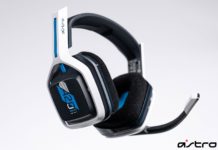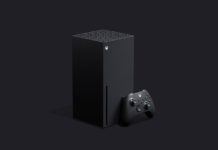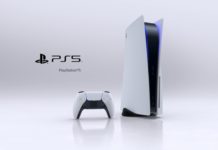The racing genre hasn’t been too
successful on the Nintendo DS. Outside of Race Driver: Create & Race,
Mario Kart: DS, and Electronic Art’s own Need for Speed Carbon: Own the
City, there haven’t been too many racing titles on the DS that captivated
racing fans. Well, EA, along with its EA Black Box studio, is ready to ante
up the stakes once again; this time both have delivered a quality game in
Need for Speed: ProStreet.
Looking back at the history of the
Need for Speed on the Nintendo DS, we can come to the conclusion that it
has been on the rise. To go even further with the analysis, the series
continues to ascend in quality ever since EA Black Box took over the reigns. After the horrible Need for Speed: Most Wanted,
EA opted to give Black Box the chance to develop Need for Speed Carbon: Own the City and it
proved to be a smart decision. Now with their second title on the DS and a year
later, Black Box is ready to provide the experience all those hardcore racing
fans want.

Playing eerily similar to NFS
Carbon, NFS: Pro Street does every thing NFS Carbon did, but
does it even better. Players should feel right at home with using the same
D-pad controls from last year. If you are unfamiliar to last year’s controls
then here’s a quick rundown of how “advanced” it is: players can use the d-pad
diagonal directions to help their turning ability either left or right. So
basically, it isn’t that advanced – it’s rather easy to pick up and play.
In terms of game modes, Black Box
inserted the standard modes for everyone to enjoy. With circuit racing, drag
racing and of course drift modes, ProStreet has everything you should
expect in a racing title. Though, exclusive to the Nintendo DS version, there’s
a “hydraulics” game mode where players compete to bounce their cars. Resembling
Dance Dance Revolution and Guitar Hero, players must hit the
buttons at the appropriate time in rhythm with the licensed music found within
the game. It’s much more difficult than I first imagined and while I am glad it
was in the game, but it wasn’t that exciting after a few attempts at playing it.

Incorporating a rewind style system,
players can now rewind a few seconds back before a big crash to fully avoid it. What this allows is rather than restarting the track all over again from the
beginning, players can pick up before the accident ever occurred and start
fresh. With this inclusion comes the removal of the paint program from last
year. No longer allowing players to put their name on the side of the cars,
NFS ProStreet still has enough customization to see the paint program
dismissed from action.
Now onto the implementation of the
DS features: The bottom screen of the DS is used for all your important details
on the race. With damage meters, a map, positions of opponents on the map and a
few other essentials, the bottom screen has enough going on with it to make it
useful. The screen even changes up for different game modes such as drag racing
with its rev-meter and other gauges.

For the licensed cars, there are a
handful of them, but don’t expect anything near the amount found in the console
versions. Every car behaves and handles differently than the rest, so that’s a
big plus. Whether you want a car with more speed or the best handling,
ProStreet provides enough that are unique from one another. If the stock
cars don’t have enough torque behind their wheels, then you can enter the
customization process to tweak your cars for peak performance.
Moving on, the visuals of the Nintendo DS version aren’t on par with the console
versions but that was already a given before playing the game. What
ProStreet does great is improve on where Carbon began with better
tracks and environments to race through. The only problem with the new and
improved tracks is that the framerate stutters at 30 frames. But to be on the
positive side, the cars also received upgrades with a glossier paint to them to
make them stick out a little more. As for the music, you can expect the usual
licensed music that comes attached to every other EA video game. This isn’t
necessarily a bad thing since the licensed music is decent and doesn’t make your
ears bleed.

The multiplayer within ProStreet
is superb. Supporting up to four players, the WiFi Connection on the Nintendo
DS is used excellently since I had more fun playing ProStreet with
friends than the computer. Players can use their custom cars in the local
wireless and WiFi, but they won’t have the same option if they are sharing the
cartridge with another through Download Play. Through Download Play, up to
eight players can join in on the races, but the shortcoming of this is that
everyone must use the same vehicle as the host.
Review Scoring Details for Need for Speed: ProStreet |
Gameplay: 7.9
Mildly addicting, it controls great
for a handheld racer.
Graphics: 7.0
Not the most mesmerizing graphics
output, but it gets the job done.
Sound: 8.0
The licensed music found within
ProStreet is easy on the ears.
Difficulty: Easy/Medium
It should end up being on the easier
side of things, but it all depends on your familiarity with racing games.
Concept: 7.5
The hydraulics game mode is a neat
addition that I haven’t experienced prior to playing ProStreet.
Multiplayer: 8.5
The best portion of ProStreet is found through the multiplayer
components.
Overall: 8.0
Outside of Mario Kart DS,
this has been the most enjoyable racer on the Nintendo DS. It’s better than
last year’s iteration for Need for Speed and I highly recommend picking
up Need for Speed: ProStreet for yourself.









